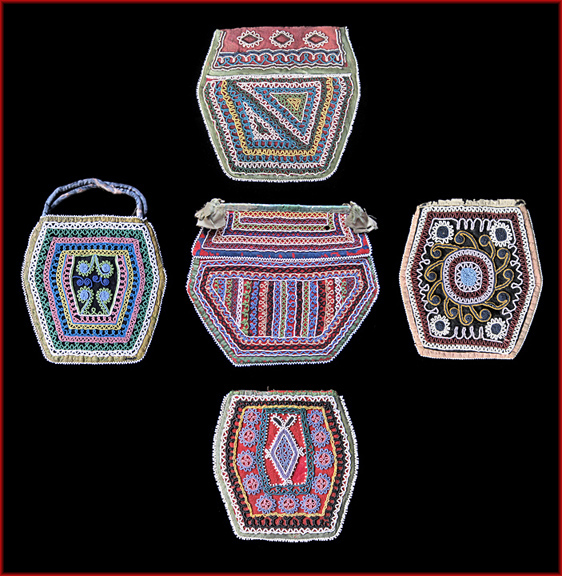The beaded bags that were produced by the Northeast Woodland tribes are distinctive and changed stylistically over time. Those changes occurred gradually but as a general rule, distinguishable style refinements can be categorized and placed into specific time frames. There are two classic periods when the hexagonal shaped bags were produced: pre-1830 and post-1830. The line of demarcation between the two occurs just after the completion of the Erie Canal in 1825. This event not only brought more tourists to the Falls but it likely spurred competition between Native beadworkers as well. As time progressed, their work matured and by 1830, examples with highly developed designs are found. Bags produced after the official opening of Erie Canal suggests that as Native beadworkers vied with each other for the tourist trade, their work become more technical. By 1830, the use of finer beads on bags allowed for more intricate designs. The ultimate end for the artists was to make their beadwork more attractive and desirable to a potential patron.
The upsurge in visitors to the Falls after the completion of the Erie Canal may have spurred other Haudenosaunee communities into producing beadwork for this market as well.
Purses from approximately 1830 to the 1840s have many similarities with the pre-1830 examples but as a general rule, they are more refined and elaborately beaded, they often use finer beads, and the designs have less negative space. The decorations on bags from this period are often linear but in many instances there is a diminishing use of the geometric and organic motifs observed on earlier pieces. The liberal use of beads to thoroughly fill a design area becomes more conspicuous during the post-1830 period with the most heavily beaded purses dating to the 1840s.
